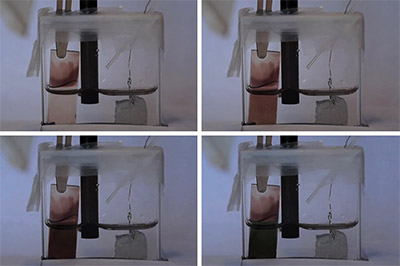Shade switching glass could reduce ac use
16th August 2016USA: A team of researchers at MIT has developed a new window that can switch from transparent to opaque, potentially saving energy by reducing the need for air conditioning.
While other systems for causing glass to darken do exist, the new method is said to offer significant advantages by combining rapid response times and a low power requirement. Once the glass is switched from clear to dark, or vice versa, the new system requires little to no power to maintain its new state. Unlike other materials, it only needs electricity when it’s time to switch back again.
The new discovery uses electrochromic materials, which change their colour and transparency in response to an applied voltage.
According to the researchers, current photochromic materials, such as those found in some eyeglasses, tend to have much slower response times and to undergo a smaller change in their levels of opacity.
The reason for the slowness is that the changes within the material rely on a movement of electrons — an electric current — that gives the whole window a negative charge. Positive ions then move through the material to restore the electrical balance, creating the colour-changing effect. But while electrons flow rapidly through materials, ions move much more slowly, limiting the overall reaction speed.
The MIT team claims to have overcome this by using sponge-like materials called metal-organic frameworks (MOFs), which can conduct both electrons and ions at very high speeds. Such materials are said to have been used for about 20 years for their ability to store gases within their structure, but the MIT team was the first to harness them for their electrical and optical properties.
It’s also not possible to get existing self-shading materials to turn from transparent to completely black. In this latest work the researchers have achieved a coating that can go all the way from perfectly clear to nearly black. This is achieved by blending two complementary colours, green and red.
“These could lead to pretty significant energy savings by drastically reducing the need for air conditioning in buildings with many windows in hot climates,” MIT professor of chemistry Mircea Dincă said of the new discovery.
“You could just flip a switch when the sun shines through the window, and turn it dark, or even automatically make that whole side of the building go dark all at once,” he says.








